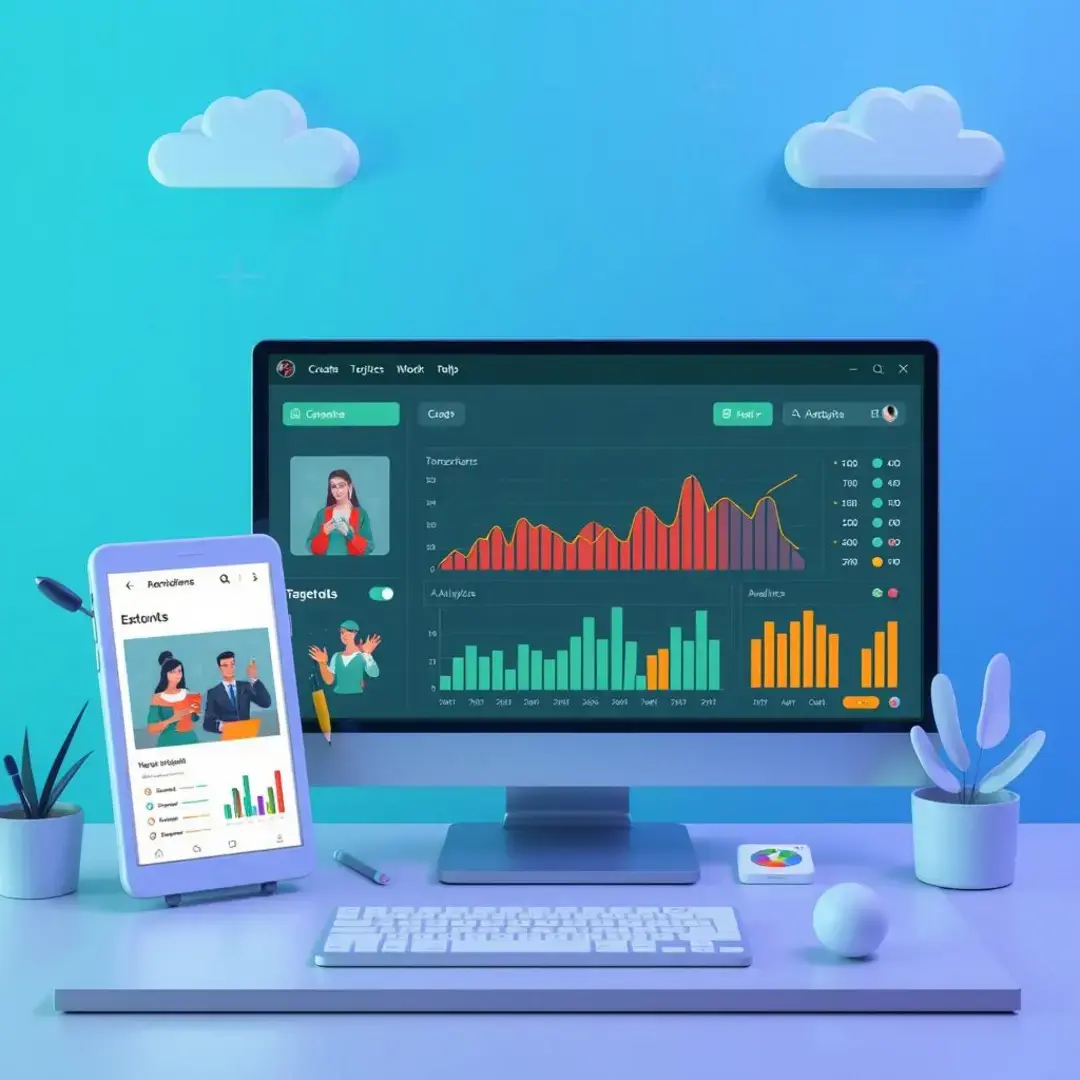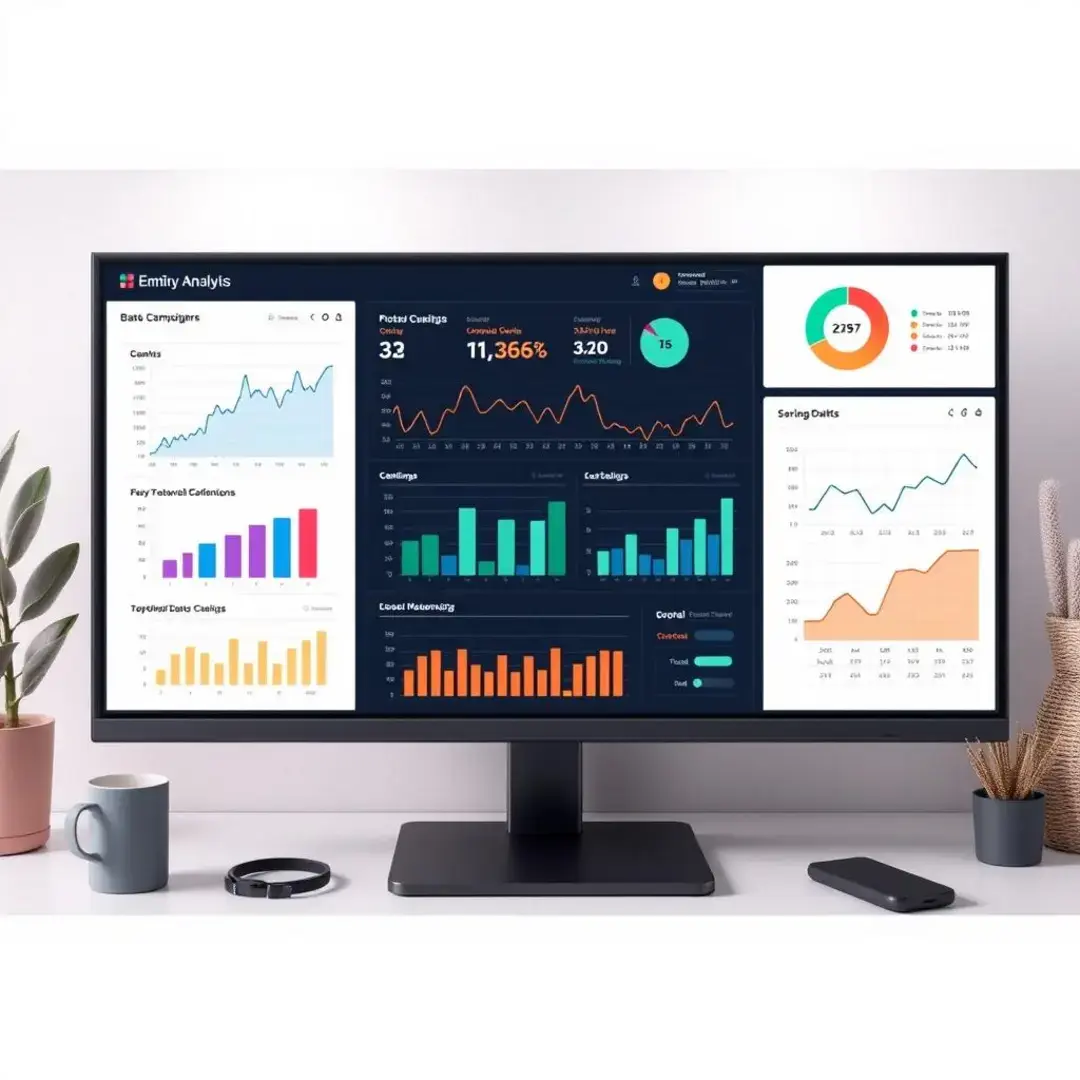Online advertising strategies: Effective online campaigns
Advanced targeting techniques

Contextual targeting for niche markets
Contextual targeting has gained immense popularity in recent years, especially for businesses looking to reach specific audience segments. By analyzing the content surrounding ad placements, marketers can serve ads that resonate with the user’s current interests. This approach allows for higher engagement rates and can drastically improve conversion rates. To optimize contextual targeting, companies should continually analyze the performance of their advertisements and adjust the deployment of ads based on real-time feedback.
Maximizing your return on investment (ROI) relies on a few key strategies when it comes to contextual targeting. First, utilize AI-powered tools that provide insights into high-performing keywords and topics. Additionally, consider A/B testing different ad creatives within similar contextual surroundings to identify what resonates the most. Tracking conversions that stem from contextual placements versus other channels can reveal areas ripe for improvement.
Behavioral targeting beyond retargeting
Behavioral targeting transcends basic retargeting by delving into a user’s online behavior and preferences to deliver highly personalized advertisements. Utilizing data from various online interactions, marketers can create a comprehensive profile of potential customers, making it possible to predict what products or services they may be interested in. This strategy not only stimulates immediate purchases but also fosters long-term brand loyalty.
Predictive behavioral targeting employs sophisticated algorithms to forecast future consumer behavior based on past interactions. This technique transforms the landscape of online advertising, allowing businesses to address customer needs proactively. By leveraging this method, marketers can launch tailored campaigns that are timed perfectly to coincide with consumer intent, significantly increasing the chances of conversion. Ethical considerations around privacy must be a priority when gathering and utilizing consumer data for these predictive functions.
Leveraging third-party data for enhanced targeting
Third-party data offers invaluable insights that can significantly enhance advertising targeting efforts. By tapping into this external data, businesses can achieve a wider scope of audience identification and improve their campaign effectiveness. However, the use of such data comes with its own set of challenges, particularly around data privacy and compliance with regulations. Transparency with consumers regarding data usage is crucial in building trust and ensuring a successful advertising strategy.
Incorporating third-party data into advertising strategies requires a keen awareness of ethical implications and ongoing legal developments. Marketers must ensure that they adhere to strict data protection regulations, such as GDPR and CCPA, to avoid costly penalties. Ethical practices, including anonymization of personal data and transparent communication, are essential to fostering credibility and maintaining a positive brand reputation.
Beyond the banner: exploring innovative ad formats

Interactive video ads for increased engagement
Interactive video ads have emerged as a powerful tool for driving engagement and capturing viewer attention. By allowing consumers to interact with the content, these ads create a more captivating experience than traditional formats. For instance, options such as clickable overlays or branching content paths can lead to more involved storytelling. As viewers enjoy a hands-on approach, the potential for increased brand retention becomes significantly higher.
To maximize the impact of interactive video ads, brands should focus on creating content that closely aligns with their audience’s interests and needs. It’s crucial to incorporate visually appealing elements alongside engaging narratives that draw viewers in. Moreover, optimizing the overall viewing experience by testing different formats and placements can yield valuable insights on consumer behavior. Crafting a seamless user experience is vital to ensuring that viewers stay engaged throughout the ad.
Native advertising that blends seamlessly
Native advertising presents a unique opportunity for brands to deliver their messaging in a way that feels organic and integrated with the content a user is consuming. This format allows ads to match the look and feel of the platform, making them less intrusive and more appealing to audiences. The effectiveness of native ads lies in their ability to entertain or inform the viewer, ultimately driving better engagement compared to traditional advertisements.
To create successful native advertising campaigns, content should be crafted with a deep understanding of the target audience’s interests and the platform’s norms. High-quality content that provides real value to the audience promotes credibility and strengthens brand presence. Additionally, careful measurement of performance metrics helps in refining strategies and optimizing future campaigns for maximum impact—all necessary for long-term brand growth.
Augmented reality (AR) advertising and its potential
Augmented reality advertising has revolutionized the way consumers interact with brands, offering immersive experiences that captivate users. By overlaying digital content onto the real world, AR can lead to incredibly engaging marketing campaigns. As consumers increasingly expect unique experiences, brands must innovate to stay relevant. AR advertising can differentiate a brand in a crowded market by offering something unexpected and interactive.
While AR advertising presents exciting opportunities, there are challenges that brands must navigate to ensure successful implementation. Technical hurdles, device compatibility, and the need for user education can hinder adoption. To counter these challenges, brands should consider investing in user-friendly AR solutions and providing clear instructions for consumers. By focusing on accessibility and clear value propositions, businesses can better integrate AR advertising into their overall strategies.
Optimizing campaigns for maximum impact

Advanced bidding strategies for competitive advantage
In an increasingly competitive online advertising landscape, advanced bidding strategies have become essential for brands to stand out. Techniques such as dynamic bidding can help businesses adjust their bids based on real-time conditions, maximizing their chances of winning valuable placements. Moreover, programmatic advertising has introduced automated systems that make the bidding process both efficient and data-driven.
Programmatic bidding allows marketers to utilize technology for making instantaneous decisions about ad purchases based on sophisticated algorithms. By analyzing a multitude of variables, including audience behavior, location, and time of day, brands can optimize their ad placements continuously. This not only enhances campaign effectiveness but also ensures that advertising budgets are spent wisely. Besides, sustained monitoring and adjustments can lead to improved ROI and overall campaign success.
Cross-platform campaign management and attribution
As consumers interact with multiple devices throughout their day, managing cross-platform advertising campaigns effectively is vital. Employing a unified strategy that allows for seamless interactions across various platforms can enhance brand recognition and user engagement. Integrating information from various sources enables marketers to understand how specific initiatives perform, leading to better-informed decisions for future campaigns.
Leveraging advanced analytics tools ensures that marketers have access to valuable insights that can inform strategic decisions across platforms. By gathering and analyzing data from different channels, brands can identify consumer behavior patterns and allocate budgets more effectively. Enhanced visualization tools can illustrate these insights, making it easier to communicate results and optimize campaign strategies. This holistic understanding of marketing effectiveness ultimately leads to better business outcomes.
A/B testing and continuous optimization for peak performance
A/B testing is an indispensable tactic in the arsenal of online advertising strategies. By comparing variations of ads, marketers can decipher which elements resonate most with their audience. This process not only cultivates an environment of continuous improvement but also ensures that resources are dedicated to the most effective strategies. With the ability to make data-driven changes, campaigns can adapt quickly to changing consumer behaviors and preferences.
To construct an effective A/B testing framework, businesses should start with clear objectives and measurable outcomes. Identifying key performance indicators (KPIs) is essential to gauge the success of various tests accurately. Furthermore, it’s crucial to establish a systematic testing schedule that allows for gradual implementation and evaluation of modifications. Only through comprehensive analysis can marketers deepen their understanding of audience preferences and enhance their advertising efforts.
Measuring and analyzing campaign effectiveness

Beyond clicks and impressions: focusing on meaningful metrics
While clicks and impressions are common metrics used to gauge ad effectiveness, they don’t paint the full picture of a campaign’s performance. Businesses need to evaluate more meaningful metrics that reflect the true impact of their advertising strategies. Metrics such as brand lift and customer lifetime value can offer deeper insights, revealing how well a campaign nurtures relationships with customers, ultimately driving long-term growth.
Brand lift measures the effect of advertising on consumer perceptions, buying intent, and overall brand perception. By conducting surveys and understanding audience sentiment post-campaign, businesses can identify shifts in brand positioning. Simultaneously, calculating customer lifetime value (CLV) helps companies appreciate the long-term profitability of their advertising efforts. This dual analysis ensures businesses are not only attracting customers but also retaining them for future profitability.
Advanced analytics for deep campaign insights
Advanced analytics tools enhance marketers’ abilities to extract meaningful insights from their data, leading to more informed decision-making. These tools enable segmentation of audiences based on behavior, demographics, and interests, fostering highly personalized marketing efforts. Moreover, employing machine learning techniques can uncover patterns within data that traditional methods might miss, allowing for more targeted campaigns.
Effective reporting relies on clear, comprehensible visualizations that highlight performance metrics and campaign effectiveness. Data visualization tools can transform complex datasets into digestible visuals, making it easier for stakeholders to understand key insights. By leveraging these visual tools, teams can communicate findings efficiently and foster discussions that lead to collaborative strategic decisions.
Predictive analytics for future campaign planning
Predictive analytics serves as a forward-looking tool that empowers marketers to forecast outcomes based on historical data. By understanding trends and potential shifts in consumer behavior, businesses can plan their advertising strategies more effectively. This proactive approach not only allows for better budget allocation but also provides a competitive edge in anticipating market changes.
Utilizing predictive modeling allows marketers to identify which channels and strategies will yield the highest returns on investment. By running simulations based on various parameters, organizations can ascertain the appropriate budget distribution across campaigns. This results in a more strategic, data-informed advertising approach that mitigates risk and maximizes profitability over time.












